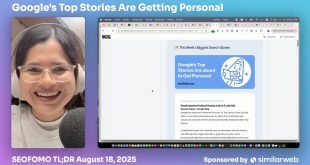Ever wonder why some news articles grab your attention while others fade into the background? You might think it’s all about hard facts and insightful analysis, right? Well, a recent study throws a wrench in that assumption. Turns out, those little labels that signal popularity – “Most Read,” “Trending,” “Recommended” – are doing some serious heavy lifting in shaping what we choose to read and, maybe more importantly, what we believe. It’s a bit like judging a book by its cover, isn’t it?
The Power of Perception: How Popularity Signals Influence News Consumption
Study Design and Methodology
So, how did they figure this out? The researchers put together a pretty clever experiment. They took a bunch of news articles – the type wasn’t specified, but probably general interest stuff – and slapped different labels on them. Some articles got the “Most Read” badge of honor, others were tagged as “Trending,” and some were simply “Recommended.” A control group, of course, got no labels at all. Then, they had a group of people (we don’t know exactly how many, but enough to be statistically significant, I’d imagine) read the articles and tracked which ones they clicked on and how much time they spent reading. It’s all about the A/B testing, you know? See what sticks. I wonder if they controlled for pre-existing opinions… that would be a real game changer.
Key Findings: Popularity Outweighs Content Quality
Here’s the kicker: the study found that people were way more likely to engage with articles that had those popularity labels, regardless of the actual quality of the content. Yep, you read that right. Even if the article was, shall we say, not exactly Pulitzer-worthy, that “Most Read” label acted like a siren song. Think about it: when you see something labeled “trending,” you automatically assume it’s worth your time, right? It’s like when a restaurant is packed – you figure the food must be good, even if you haven’t read any reviews. The numbers don’t lie: articles with popularity labels outperformed those without, even when the content was identical. Makes you wonder, doesn’t it, if we’re really thinking for ourselves or just following the crowd?
The Psychological Underpinnings: Why We Follow the Crowd
Okay, so why are we so easily swayed by these popularity signals? Turns out, it’s deeply rooted in our psychology. We’re wired to look to others for cues on what’s safe, valuable, and worth our attention. It’s called social proof. If a lot of other people are doing something, we assume it must be a good idea. It’s herd behavior, plain and simple. Plus, there are all sorts of cognitive biases at play. We tend to trust information that’s been endorsed by a large group, even if we don’t know anything about those people. It’s like, “Well, everyone else is reading it, so it must be true!” (Or at least interesting enough to click on.)
Implications for Journalism and Information Dissemination
The Echo Chamber Effect: Reinforcing Existing Beliefs
Now, here’s where things get a little dicey. This popularity bias can seriously amplify the echo chamber effect. If we’re constantly choosing news based on what’s already popular, we’re more likely to encounter information that confirms our existing beliefs. Social media algorithms don’t help either. They’re designed to show us more of what we already like, creating a feedback loop that reinforces our biases. It’s kind of a scary thought: are we just getting trapped in our own little bubbles, only hearing what we already agree with?
Combating Misinformation: Strategies for Promoting Critical Thinking
So, what can we do about it? One answer lies in media literacy education. We need to teach people how to think critically about the information they consume and to question the sources they’re relying on. Fact-checking initiatives are also crucial. And maybe we need to rethink how algorithms work, prioritizing content quality over popularity metrics. Easier said than done, of course. I mean, even journalists have a role to play here, right? They need to be responsible about how they present information and avoid sensationalism.
In the end, it all boils down to being a more conscious and critical news consumer. Don’t just blindly follow the crowd. Take a moment to consider the source, the content, and your own biases. It’s not always easy, but it’s essential if we want to stay informed and avoid getting swept away by the latest wave of misinformation.
 Cloudabouts
Cloudabouts




